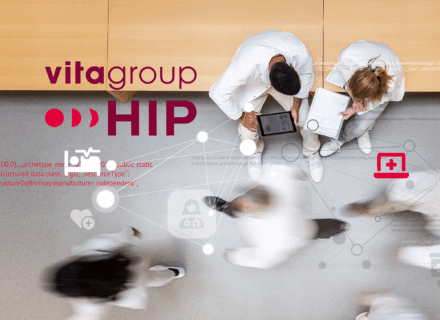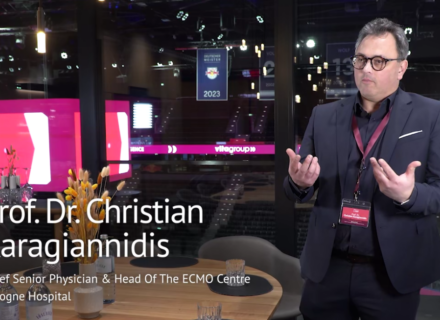How open platforms solve integration problems
Healthcare faces a major integration crisis—most systems can’t share data, leading to huge inefficiencies and avoidable costs. Open platforms offer a solution with vendor-neutral, interoperable frameworks.

The lack of interoperability in the healthcare industry is causing significant inefficiencies, costing the industry over EUR 150 billion annually¹. The challenges are compounding. Recent research reveals that over 90% of organisations struggle with basic data exchange, while clinicians lose over 13 million working hours annually because their systems don’t talk to each other. In a single hospital, doctors report they will have open “three EPRs (Electronic Patient Records), at least four web-based apps, and two standalone internal results systems”.
At the heart of these challenges are legacy and monolithic IT systems, which are making it difficult to exchange data efficiently. These systems have limited API capabilities, inconsistent adoption of data standards, and complex security and compliance requirements, resulting in costly and time-consuming custom integrations.
Connecting healthcare with open platforms
With their vendor agnostic capabilities, open platforms are seen as an antidote to monolith system capture. By providing standardised, flexible, and interoperable frameworks, they simplify the integration of different systems, applications, and data sources. “Open platforms like vitagroup’s HIP address integration challenges because they emphasise vendor independence, enabling healthcare organisations to take full control of their systems and data,” Markus Mann, project manager at vitagroup points out.
Open platforms like vitagroup’s HIP address integration challenges (…), enabling healthcare organisations to take full control of their systems and data.
Markus Mann
Projectmanager, vitagroup

This independence is critical for several reasons:
- Avoiding vendor Lock-In: Closed systems often tie organisations to specific vendors, limiting flexibility and driving up long-term costs. Open platforms eliminate this dependency by allowing organisations to choose or switch vendors without disrupting operations.
- Data ownership: With open platforms, healthcare providers retain full control over their data, ensuring compliance with privacy regulations (e.g., GDPR) and reducing reliance on proprietary systems that restrict access or charge for integrations.
- Freedom for innovation: Vendor-independent platforms empower organizations to innovate by integrating with a wide range of tools and applications, fostering an ecosystem of diverse solutions tailored to specific needs.
- Cost-effective scalability: Organisations can scale their infrastructure and capabilities without incurring additional licensing fees or vendor-imposed limitations, leading to greater financial and operational efficiency.
- Long-term sustainability: Open platforms grow and adapt with technological advancements, ensuring that healthcare providers remain at the forefront of innovation without being constrained by the roadmap of a single vendor.
“By promoting interoperability, flexibility, and choice, open platforms provide a future-proof foundation for healthcare integration that prioritises the needs of providers, patients, and regulators over those of proprietary technology vendors,” says Markus Mann. “This vendor independence is a cornerstone for building resilient and innovative healthcare ecosystems.”

Vendor independence is a cornerstone for building resilient and innovative healthcare ecosystems.
Markus Mann
Projectmanager, vitagroup
Overcoming integration challenges in Catalonia
vitagroup open platform’s open standards, API-driven architecture, and structured governance facilitated successful integration across more than Catalonia’s 1,000 healthcare facilities. The project represents the biggest open platform implementation to date, managing over 13 million electronic health records and more than 1 billion compositions. Through collaboration with partners such as IBM, Yugabyte, Medblocks, and Kyndryl, we overcame significant technical challenges to bring this large-scale system to operational status. The massive scale of the implementation introduced several critical integration challenges that had to be addressed to ensure system efficiency and reliability.
The primary challenges were around three key areas:
- Performance bottlenecks: The sheer volume of data, with over 13 million electronic health records and more than 1 billion compositions, caused significant delays in patient-centric queries.
- High availability requirements: The distributed nature of healthcare data in Catalonia necessitated a robust high-availability (HA) infrastructure.
- Data migration complexity: The extensive data migration process presented its own set of challenges.
To address these challenges, vitagroup introduced several targeted strategies aimed at optimising vitagroup´s open platforms performance, ensuring reliability, and enhancing interoperability.
1. Performance optimisation
The team optimised the query execution engine and indexing strategy to ensure efficient handling of complex and high-volume queries. As Markus notes, “Load testing with real-world scenarios was critical to identifying bottlenecks and implementing tailored solutions – in so doing, we specifically focused on concrete use cases from everyday clinical practice.”
2. High-availability infrastructure
The platform leveraged a cloud-based architecture and redundancy mechanisms to ensure seamless failover and scalability. Technologies like YugabyteDB were incorporated to enhance database reliability.
3. Interoperability framework
Beyond performance and reliability, interoperability played a vital role in the success of the project. APIs and open standards were pivotal in enabling smooth data exchange across diverse systems:
- Standards: By supporting open standards such as openEHR and FHIR, the platform ensures data compatibility across diverse systems.
- APIs: RESTful APIs facilitate data exchange, enabling real-time interoperability and reducing dependency on proprietary connectors.
- SMART on openEHR: Emerging standards such as SMART on openEHR further simplify authentication and authorization processes for integrated applications in the future
4. Data standardisation
Finally, maintaining data consistency across the different systems was a critical aspect of the implementation. The platform ensures standardised data structures through:
- Standardised clinical models using archetypes and templates
- Centralised governance for archetype management
- Comprehensive training and community support for providers
Through a combination of technical innovations and structured governance, the Health Intelligence Platform has demonstrated its capability to handle the complex integration challenges of large-scale healthcare systems while maintaining high performance, reliability, and interoperability standards.
Valuable insights
The implementation of HIP platform in Catalonia has yielded valuable insights for large-scale healthcare integration projects. Mann emphasises the importance of “Performance test environments that mirror the production environment – both in terms of infrastructure and the volume and distribution of data—are absolutely essential for large-scale solutions like this.”
The project also highlighted the critical role of stakeholder engagement. As Markus Mann points out, “One of the most critical lessons is the need to bring all parties together regularly. Frequent meetings with stakeholders, including healthcare providers, regulatory bodies, and IT teams, foster transparency, ensure alignment, and allow for real-time problem-solving.”
The success of the implementation was further supported by a use case-driven approach, focusing on both immediate operational needs and future scalability requirements. This approach helps stakeholders envision the long-term benefits and align their strategic goals with the project.
1 Europäische Kommission – Bericht über die Interoperabilität im Gesundheitswesen; European Observatory on Health Systems – Ineffizienzen im Gesundheitswesen; McKinsey & Company – Ineffizienzen im europäischen Gesundheitswesen; European Health Information Initiative (EHII) – Patient Safety Report; European Research Area (ERA) – Research Data Sharing and Duplication; European Centre for Disease Prevention and Control (ECDC) – Pandemic Response Analysis



